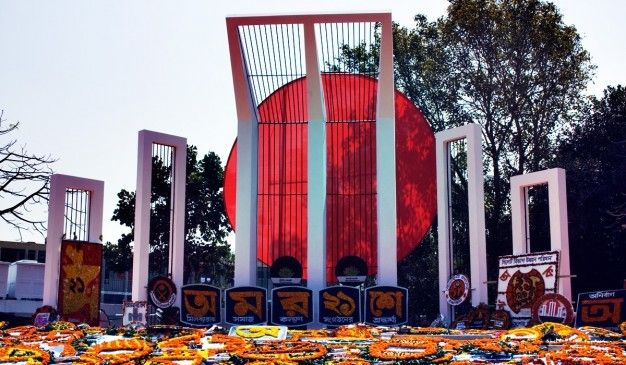
Shahid Minar Memorial, Dhaka, Bangladesh
February 21 has been International Mother Language Day since the United Nations declared it in 2000. The UN International Mother Language Day website says that the theme for 2017’s International Mother Language Day is:
To foster sustainable development, learners must have access to education in their mother tongue and in other languages. It is through the mastery of the first language or mother tongue that the basic skills of reading, writing and numeracy are acquired. Local languages, especially minority and indigenous, transmit cultures, values and traditional knowledge, thus playing an important role in promoting sustainable futures.
However, many people don’t know the history or the significance behind February 21 being the UN’s decision. After the partition in 1905, Bangladesh became known as East Bengal, but upon the creation of the state of Pakistan, it was known as East Pakistan.
In 1948, the Language Movement began in Bangladesh. As Pakistani leaders were trying to decide what the official language of Pakistan would be, they excluded Bengali intellectuals and students from the conversation. Dhirendranath Dutta proposed that Bangla should be considered as one of the languages spoken at the Constituent Assembly in Karachi, Pakistan, which stated that the only languages that were allowed to be spoken were English and Urdu. Dutta’s proposal was struck down, and Bengalis were angered by this motion, which began the Language Movement.
In 1952, the Language Movement was moving quickly; the two main leaders were killed in 1948 and 1951. There was a strike on January 30, 1952, and the day after, there was a Language Action Committee meeting, where it was suggested that Bangla be written in the Arabic script, rather than the Eastern Nagari script. This angered the Bengalis further, and “As preparations for demonstrations were underway, the government imposed Section 144 in the city of Dhaka, banning all assemblies and demonstrations”.
On February 21, 1952, students of Dhaka University, Jaggonath College, and Dhaka Medical College decided to violate Section 144. The students (and some university professors) assembled, and shouted slogans. As they marched, the police, who were armed, began beating the students with batons. The students began throwing bricks at the police, who began throwing tear gas at the students. Almost immediately after, the police began firing at the crowds of students, killing three students, and severely injuring another student and a nine year old boy.
Even after these protests, the chief minister of the East Pakistan “continued to oppose the demand for Bangla”, and on February 22, there were more protests, and even more deaths.
The Bengali Language Movement would continue until February 1956, when there was an amendment to include Bangla as one of the official languages of Pakistan. The Shahid Minar memorial was erected in 1963 to remember the martyrs who died during the February 21 protests.
In 2000, the UN declared February 21 International Mother Language Day to honor the martyrs who died for the Language Movement, and, primarily, “to promote linguistic and cultural diversity and multilingualism”.
Happy International Mother Language Day!
